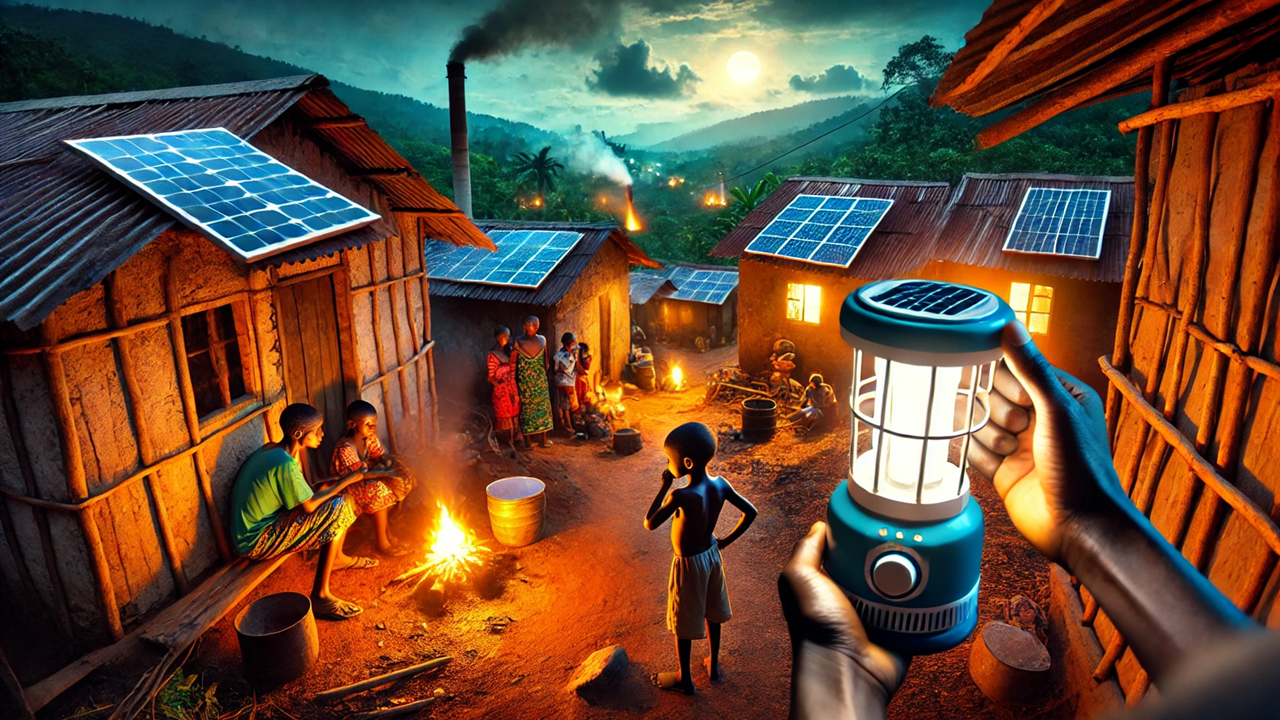Powering Sierra Leone: A New Dawn for Energy Access
The comprehensive report "SIERRA LEONE Energy Access Diagnostic Report Based on the Multi-Tier Framework" by the World Bank highlights the urgent need for improved electricity and cooking solutions in Sierra Leone. With only 21.1 percent of households having access to electricity and 71.2 percent relying on open-fired stoves, the report provides critical policy recommendations to bridge the energy divide and promote sustainable solutions.

The struggle for reliable electricity and modern cooking solutions in Sierra Leone is a pressing issue that the recently published "SIERRA LEONE Energy Access Diagnostic Report Based on the Multi-Tier Framework" by the World Bank sheds light on. This comprehensive report reveals the stark realities and offers a roadmap for the nation's energy future.
The Current State of Electricity Access
In Sierra Leone, only 21.1 percent of households have access to electricity, with the majority connected to the national grid (20.5 percent) and a small fraction to mini-grids (0.6 percent ). Off-grid solutions, predominantly solar products, cater to 14.7 percent of the population, mainly in rural areas. Urban households are significantly more likely to have grid access (44.7 percent ) compared to their rural counterparts (1.3 percent), who rely heavily on off-grid solar solutions.
The Multi-Tier Framework (MTF) provides a nuanced measurement of electricity access, considering seven attributes: Capacity, Availability, Reliability, Quality, Affordability, Formality, and Safety. Nationwide, only 24 percent of households meet the criteria for electricity access at Tier 1 or above. Rural areas are particularly disadvantaged, with 95.7 percent of households falling into Tier 0, indicating minimal to no access.
Economic status plays a crucial role in electricity access. Households in higher expenditure quintiles are more likely to be connected to the grid, with a stark contrast between the lowest quintile (5.5 percent connectivity) and the highest (38.9 percent ). The main challenges include the high cost of electricity, poor power quality, and limited capacity. A significant portion of households (63.8 percent ) spend 5 percent or more of their budget on electricity, with many experiencing appliance damage due to voltage fluctuations and frequent outages.
Policy Recommendations for Better Access
Improving electricity access requires addressing affordability, reliability, and quality. Geospatial planning should be used to develop optimal energy solutions based on population density, proximity to the grid, and potential electricity demand. Grid densification, achieved through flexible payment options and financing, can help overcome the financial barriers to grid connection. Mini-grids should be developed for remote areas with significant electricity demand.
Off-grid solar products are essential for areas without grid infrastructure. Consumer awareness programs can boost demand and willingness to pay for these solutions. The report emphasizes the need to improve the reliability, availability, and quality of existing grid connections to shift more households into higher tiers of access.
Clean Cooking Solutions: An Urgent Need
The report highlights the dire state of cooking solutions in Sierra Leone, where 71.2 percent of households use three-stone open-fired stoves, followed by traditional cookstoves (27.9 percent). Adoption of clean stoves, such as those using liquefied petroleum gas (LPG), is extremely low (0.6 percent ). Urban areas have a higher prevalence of traditional stoves (56.6 percent ), while rural areas predominantly use three-stone open-fired stoves (95 percent ).
Fuel usage is closely tied to stove type, with households using firewood and charcoal for traditional cookstoves. The reliance on collected firewood in rural areas contrasts with the urban practice of purchasing firewood and charcoal. This heavy dependence on inefficient and polluting stoves has significant health and environmental impacts.
Empowering Women Through Energy Access
Gender disparities are evident in energy access, with female-headed households having lower access to electricity compared to male-headed ones. Willingness to pay for grid and solar solutions is also influenced by gender, with male-headed households showing higher willingness.
Addressing these disparities is crucial for promoting women's empowerment. The report recommends targeted interventions to improve access to electricity and clean cooking solutions for female-headed households, thereby enhancing their quality of life and economic opportunities.
Call to Action
The "SIERRA LEONE Energy Access Diagnostic Report Based on the Multi-Tier Framework" provides a detailed analysis of the challenges and opportunities in improving energy access in Sierra Leone. By addressing the key issues of affordability, reliability, and quality, and promoting off-grid solutions and clean cooking technologies, Sierra Leone can make significant strides towards ensuring sustainable and modern energy for all its citizens.
- FIRST PUBLISHED IN:
- Devdiscourse










